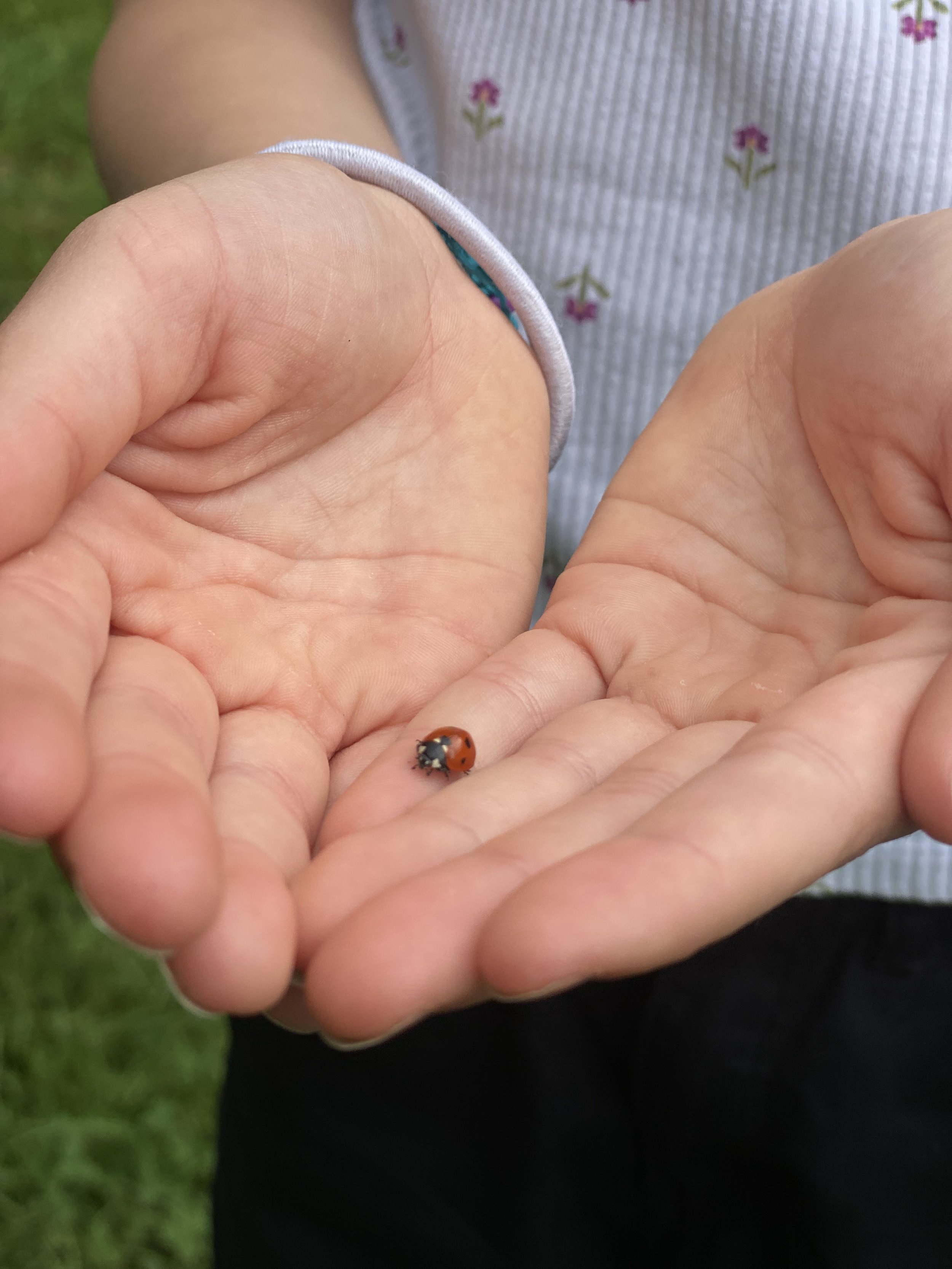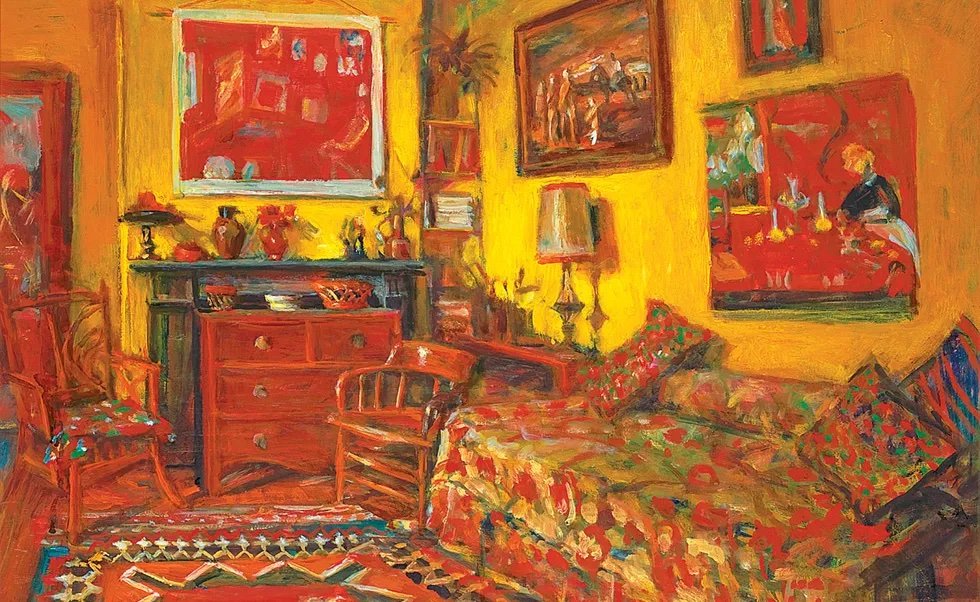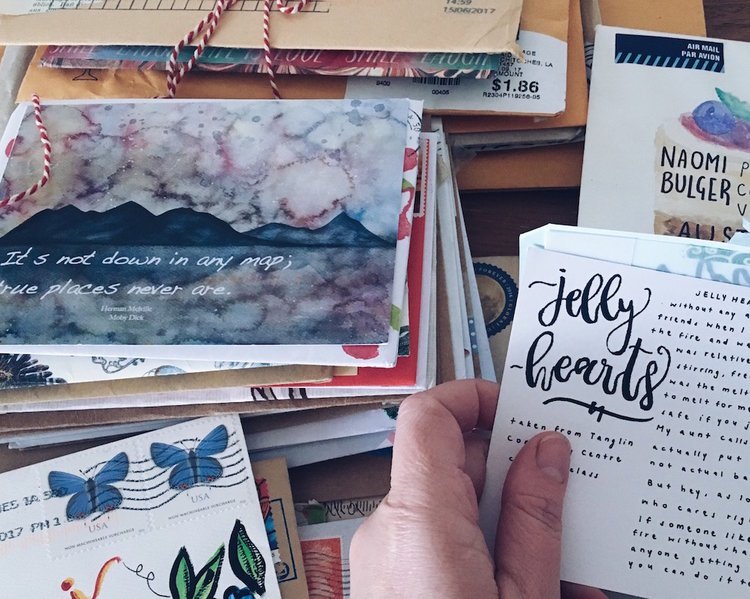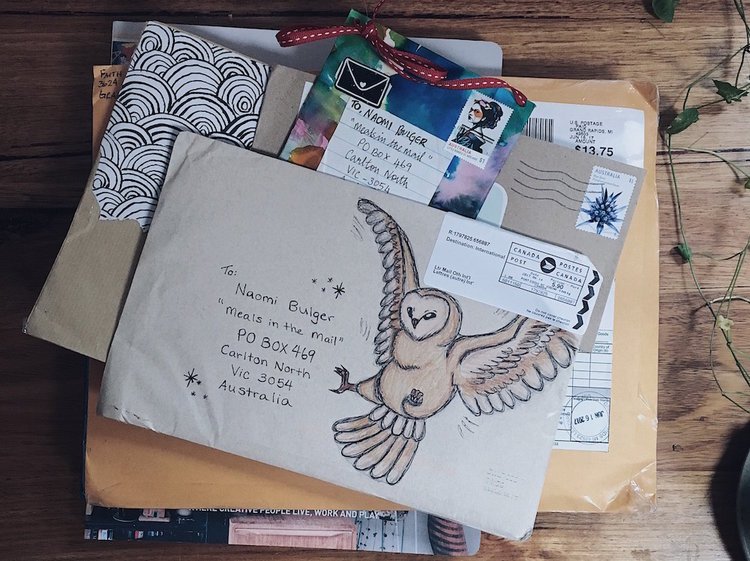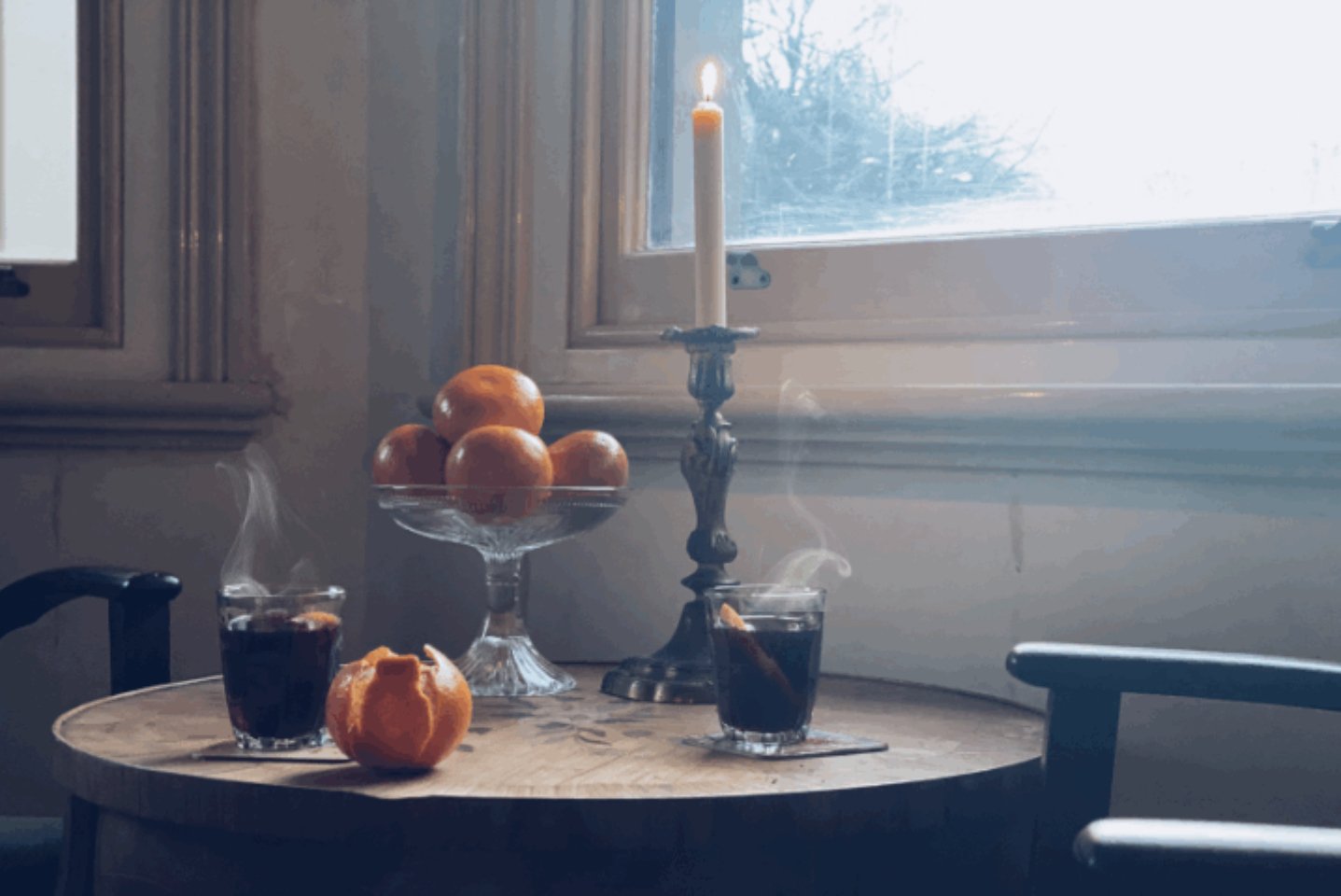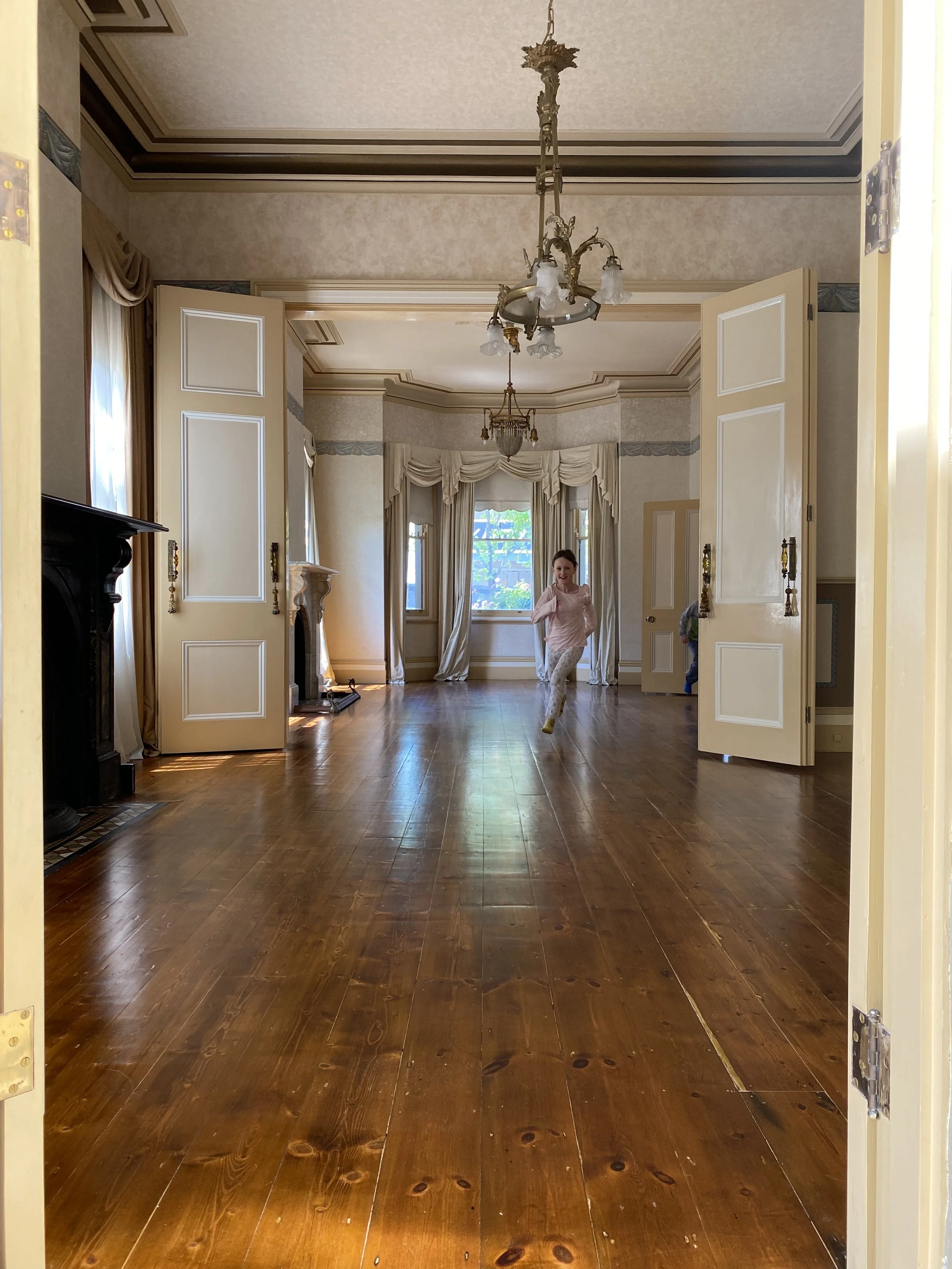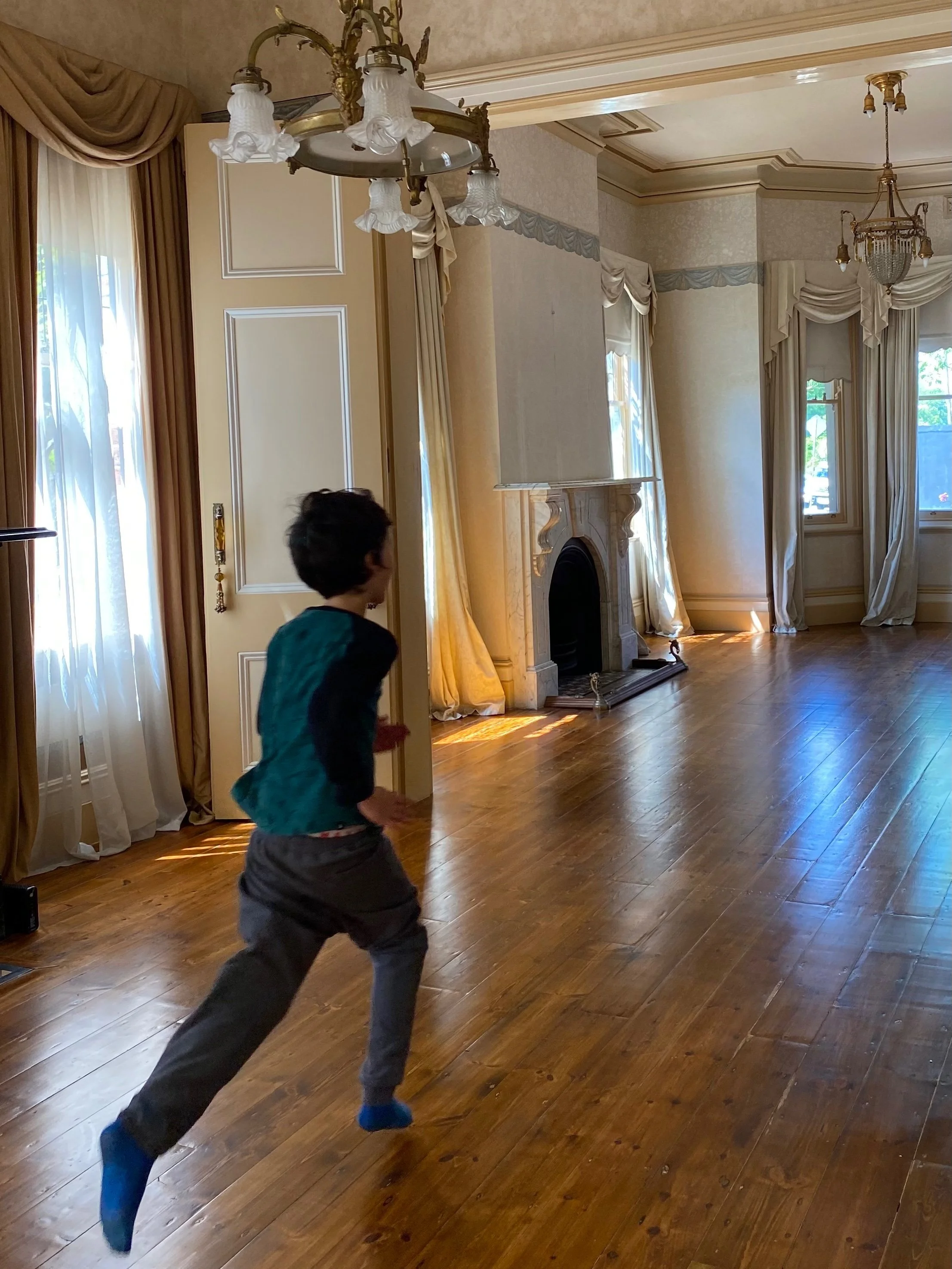
JOURNAL
documenting
&
discovering joyful things
The people who dress up in public
There is a group of people who meet in the park across the road from our house every couple of months. The first time we saw them gather, we thought it was for a wedding. Early in the morning, small marquees were erected, then they put up a kind of flower-and-foliage covered arch and two large, carved chairs, like thrones.
But as the morning continued, the event looked less like a wedding: people began to arrive wearing linen shifts tied loosely at the waste, others were dressed in flowing gowns embroidered at the neck, while some of the men wore colourful stockings and fitted jackets, and carried swords at their sides.
Later in the day, while I was outside dead-heading the roses, their voices carried across to me from the park. I couldn’t catch all of it but “Huzzah!” occurred at irregular intervals.
Years ago, just before I moved home from New York, my husband and I took his two oldest girls to a medieval fair at The Cloisters. The girls were tweens at the time and joyfully dressed up in their own interpretations of “Middle Ages”. Among that crowd, my husband and I were definitely among the minority in our jeans.
And every September in the beautiful town of Bath in the UK, hundreds of people dress up in Regency costume for the Jane Austen Festival.
But they don’t just dress up at the Jane Austen Centre, where costume makes sense, or even just outside the locations of the festival events, where costume is suggested as “welcomed but not required” on the program.
When our family was in Bath last month, we also met people dressed in full- or part-historical costume while sharing beers at the pub, or shopping for homewares and books, or waiting for take-out at the local Indian restaurant, and even buying toilet-paper at Waitrose.
The children invented a game called “Regency Bingo” that involved competitively spotting the costume-wearers. I became a little bit obsessed with finding them, much to my family’s amusement.
But the reason I was quite so obsessed was because I couldn’t answer the question for myself of, why? Surely you can’t truly suspend your reality: surely it doesn’t feel like time-travel when you’re surrounded by cars, shops, iPhones and onlookers. So, why?
I started to google “historical dressing” in search of answers, which inevitably led me to “cos-play,” and onwards to something called “history bounding,” which I discovered meant dressing with reference to, or elements of, historical periods, but not necessarily dressing in full costume (I think that’s what it means? Anybody?)
And as it turns out, “historical costumers” are all over the world. I learned about UK-based Zack Pinsent, who make his own Regency era clothes and wears them every day, everywhere. And US-based Cheyney McKnight (Not Your Momma’s History), who dresses in historical clothing as a form of performance art, through which she opens up conversations around America’s slavery history. Also in the US, husband and wife couple Sarah and Gabriel Chrisman live (almost) entirely in the Victorian era (except that they also maintain a website and YouTube channel about their lives).
I even came across a handy article on costuming etiquette in case anybody else wants to try dressing up, by New Zealand-based “costumer” and textile historian Leimomi Oakes.
If you are a historical costumer, or if you know somebody who is, I’d love to know how it makes you feel. I want to know why you do it, and how it brings joy to your life.
On our last evening in Bath, we walked past a bookshop that was hosting an event, and must have seen 30 or more Regency-era guests lining up on the stairs, waiting to go in. And, ping!, just like that, there went a little light-bulb inside my head...
Community!
Not long ago, Sara Tasker posted a brief thread on her Substack Entre Nous, in which she said the two biggest influences on her life (chronic illness and childhood trauma) had also been key, common factors that tied her to the online community she had built and nurtured.
And as I looked at all those long dresses, feathers, stockings and top-hats lining the stairs of the bookshop in Bath, I thought that maybe “community” was part of the answer here, too. Because when you’re walking alone or in pairs through along a busy street or in the pub or buying toilet-paper at Waitrose, your costume stands out and you are possibly the subject of shy smiles, pointing fingers, and requests for selfies. But when you are climbing the stairs of a bookshop among 30 other people who are dressed the same as you and clearly share at least some of your important interests, you belong.
You have found your people. You’re part of a like-minded community, and that’s always going to be something special.
Misty-headed
I don’t know if I can still write. Writing requires at least a modicum of free headspace, small pockets of time that can be carved out of busy schedules. To create something new necessitates thinking and reflecting and pondering and appreciating, all of which have felt about as futile as wobbly jelly, carried in my bare hands. I am misty-headed.
I intended to start a book this year, but I only got a short way in before Life - in the form of parenting, a new full-time job, a home renovation, a house-guest who stayed seven months, and an unexpected and forced move out of home that lasted six months - declared it had other plans. I haven’t given it up though. It’s a book I began thinking about during Lockdown, because Lockdown was when my husband and I turned into our parents.
We entered the Covid Years reading intellectual, philosophical, literary fiction and political biographies, and entertaining ourselves in the downtime with over-the-top, fantastical television like Game of Thrones, Vikings, and The Last Kingdom. We emerged on the other side of Lockdown reading stories about old women in department stores and tea-rooms, and biographies of gardeners, and having watched our way through the entire back catalogues of Antiques Roadshow and Father Brown.
No longer did I want to write anything challenging, anything troubling, or anything world-changing. After Covid, all I wanted to write were stories that inspired gentle happiness.
So I began plotting out a cosy mystery about the loveable members of a guerrilla-gardening club in a historic part of Melbourne, who may or may not be hiding nefarious secrets, which would be uncovered by the hapless new owners of one of the centuries-old houses in the neighbourhood. If you can imagine a story that combines historic-home renovation with quirky characters, beautiful Melbourne, a community garden, and a mystery or two to be solved, then that’s the book I’m writing. But I’m only short way in, because, Life.
We are in Bath. We arrived yesterday, and already I am, predictably, in love. There are three dove-grey Persephone books on the kitchen table of our Air BnB, I have blisters on my toes from walking 20 kilometres through town and up around the Bath Skyline, and the children are playing a game they created called “Regency Bingo,” counting the number of people we can spot who are dressed up a la Jane Austen (the current tally is 24).
I want to tell you all about it, but it seems I have forgotten how to write. You don’t want to hear me say “We went there,” and “We did this,” I’m sure. I have forgotten how to tell you the deeper stories underneath the places, the small moments that mean something, the funny anecdotes, the connections we make, and the ways that travel has changed us.
Those things are still happening on the inside, but I don’t know how to write them any more. My words are wobbly and rusty, like an old man who discovers a cobwebby bicycle behind the shed and decides to ride it six blocks to the milk bar, after decades of only walking.
Give me time. I will keep peddling.
And in the meantime, let’s take a stroll around Bath.
(The photograph above is of a “dream house” we came upon after emerging from a remote field. You may have to zoom in to see it. When I win the lottery you may find me here, writing and painting.)
Calm in the chaos
Margaret Olley, Yellow Interior (1989)
There’s a certain mental freedom - so powerful it almost feels like a physical freedom - to having an ordered home.
I see people - sometimes I go to their houses, I read about them, I see them depicted on TV - who live in creative chaos. Family members, friends, neighbours, pets, art, food, and all the trappings of a life lived in abundance race and chatter and laugh and love from room to room in their homes, leaving behind them a trail of noise and joy and the rough and tumble of life lived in utter creativity and spontaneity.
How do they do it? What secrets do they hold, that open the doors to creativity from chaos?
Have you ever had a glimpse of the late artist Margaret Olley’s house? I’ve seen photographs, and of course, she painted a lot of interiors, and it’s an absolute, fabulous, mess! There’s stuff everywhere. I’m not going to deny her home is wonderful to look at: the rooms almost feel alive, as though she was just - only a second ago! - there beside the window. And all over the tables, chairs, sideboards, floors and walls are all the wonderful, colourful, intimate detritus of life that made her paintings so alive and so special.
A recreation of a room in Margaret Olley’s house
Margaret Olley’s dining room (2011)
I can’t do it. For me, productive creativity comes from a place of calm. Of emptiness, even. Of quiet, and stillness, and the absence of clutter.
Of course, I’ve had to learn to compromise. We have children, pets, jobs, and are planning our renovation: our home is most often busy and cluttered, and my deadlines don’t stop just because the house is a mess. But when it is clean - oh! - it’s as though a burden I hadn’t known I was carrying has been lifted from my shoulders.
Is any of this familiar to you? Am I alone?
And when life itself begins to crowd in, to feel cluttered and chaotic and out of control, for me, that’s when the cleaning starts. My children have become wary of a certain look I get in my eye, and everyone metaphorically (or perhaps physically) takes an uneasy step backwards. “Oh no, she’s got her Cleaning Face on again.” It’s a kind of instinctive reaction I have to feeling out of control: what’s one thing I can control? The way the cereal boxes line up in the pantry, that’s what.
Well, life is feeling more than a little chaotic right now. We are hurtling towards the end of the year at breakneck speed: I’m in the final weeks of teaching Let it Grow, my Tangle & Fern clients are busy needing Christmas sales content and trying to wind up projects we’ve been working on, Meals in the Mail is snowballing with joyful abandon, the children’s school seems to have a new excursion/concert/fete/fundraiser on every second day, and I’m fairly sure that all the social and professional engagements that were cancelled during the past two-and-a-half years have all been crammed into the three months from October to December this year.
Margaret Olley, The Blue Kitchen (1993)
And at precisely five o’clock yesterday afternoon, it all became too much.
I closed my computer, went into the kitchen, and started pulling things out of the ‘fridge and putting them onto the kitchen bench. And I didn’t stop until quarter-to-one in the morning. By the time I finally climbed into bed, the ‘fridge was gleaming, the food neatly sorted and stored, and our pantry (which previously resembled Monica’s secret closet) was ordered to within an inch of its life.
The thing about our pantry is that it’s built like a tall, shallow wardrobe. Utterly impractical. Several of the shelves are above my eye-line, and can’t even be reached at the back by my blind, groping hand as I try to figure out what’s in there. (The kitchen renovation starts in February).
My husband definitely does not help the pantry situation. For some unfathomable reason, he loves to visit the supermarket, and shops as though we are hosting the Under 15s football team daily (as opposed to the reality, which is two adults who eat out too often, and two small and somewhat picky children). This, despite the fact that he doesn’t actually cook.
Every weekend I beg him not to go shopping, and every Saturday he heads to the supermarket and returns home laden with bulging shopping bags, saying, “It’s just a few essentials.”
Last night, as I tidied and sorted into the wee hours, I found in that pantry:
15.92kg of sugar, in various colours and forms
5 packets of panko breadcrumbs
2kg pearl couscous
5 boxes of powdered cocoa
6 boxes of muesli bars (mostly the ones the kids won’t eat)
407 Twinings English Breakfast teabags
(I mean, he wasn’t entirely over-reaching with the teabags).
And when I got up this morning, despite definitely not having had enough sleep, I felt freer. I kept opening the ‘fridge and pantry just to look at all that lovely order, and it made me smile. I felt so free, so calm, I was even inspired to start writing again, and to dust off this friendly old blog.
Hit me with your best shot, Silly Season. I’m ready.
Friendship was the missing ingredient
When I started a little community-art project called “Meals in the Mail” in 2017, I didn’t articulate - even to myself - why the sharing of recipes via snail-mail felt so important to me. I just knew that it was important.
I invited people to post me a favourite recipe, and to enclose with it some words about why the recipe was so special to them.
Even in my wildest, most optimistic dreams, I could not have imagined that such a simple idea would resonate so profoundly with so many people. In the six weeks of this project, I received more than 250 letters, each of them containing recipes and stories, and often also enclosing photographs, paper ephemera, drawings and paintings. Favourite recipes making their way to me from all over the world, carrying with them the flavours, traditions, histories and personal connections created the people who sent them. Comfort food, nostalgic food, the food of adventure, the food of tradition, the food of family, the food of true love.
I sat with these recipes for five years, overwhelmed by the responsibility of what they meant to me, and potentially to you. Their very value prevented me from making something of them. Nothing I could think of would truly do justice to the precious treasure I felt I was holding.
But, as with so many other challenges, a burden shared is indeed a burden halved.
I came to know Melanie Hall earlier this year, when she joined one of my courses. And while it was my job to teach and support Melanie, almost immediately, I realised I there was so much I had to learn from her. And more than that, I had an immediate and almost childlike feeling, one that grown-ups only ever-so-rarely get, that I wanted to ask Melanie, “Will you be my friend?”
Naturally, she was a perfect fit on paper for Meals in the Mail: as a baker, a caterer, an amateur food historian, and a lover of snail mail, I knew she would perfectly complement my skills as a writer, an illustrator, and - of course - a lover of snail mail.
But if I’m honest, I invited Melanie to join me in this project without strategy or planning. Instinctively, I knew that together we could bring this project to life.
Which brings me - at last! - to some rather exciting news I have to share, which is the beginning of something very special. Finally - finally! - the Meals in the Mail recipes will have the opportunity they deserve to shine.
Together, Melanie and I are going to cook the recipes, read the stories, celebrate the beautiful mail-art, and explore the interesting paths they open up for us.
Paths that lead to culinary histories, cooking techniques, emotional connections, nostalgic memories, cultural traditions, and, of course, delicious food.
We’ll share all of this in a podcast, a newsletter, weekly dispatches, recipes, books, and more.
This whole project (with the first of the Meals in the Mail letters) officially kicks off on on 3 October 2022, but there’s already some content available to read if you’d like to get a feel for what we’re creating:
Here is the “About” page for our project
Here’s a story of Nan’s pumpkin soup in two parts (start here then continue here)
Here’s the subscribe page if you’d like to be part of this (there are free and paid options)
Naturally, I’d be beyond thrilled if you wanted to read and listen along.
And, as shared recipes are all about forging connections, Melanie and I hope you will not only watch, listen to and read our stories: we invite you to weave your own stories into them as well. Tell us what the stories we share mean to you. Tell us if you try the recipes! Ask Melanie your most puzzling culinary questions. Ask me to help you turn your favourite food-story or recipe into shareable art.
Over time, we’ll also invite them to share their own “meals in the mail” to be featured in this project.
It is our hope that this new iteration of Meals in the Mail becomes a truly collaborative project: not only between me and Melanie, but also between the two of us, and you.
Our kitchens are connected, ours and yours, through the simple but potentially eternal tools of pen, paper, and postage stamp.
Vale Queen Elizabeth II
“I declare before you all that my whole life whether it be long or short shall be devoted to your service…”
She was a steadfast presence in all of our lives for the entirety of our lives. Stalwart, implacable, often smiling yet unknowable, and comforting in her example of what it means to truly carry on.
As photographs from the length and breadth of her 96 journeys around the sun flood our social media feeds, and the news is awash with rolling updates and nostalgia-sodden vintage footage, it’s hard not to be swept away in memories.
Her younger self, bedecked in ballgown, sash and crown, almost smiling (Mona Lisa-esque) serenely down on us from the wall of every community room, town hall, Sunday School gathering and CWA bake sale the length and breadth of this country.
Me standing with my schoolmates in straight lines on the asphalt, under a burning sun, all of us chanting “I honour my God, I serve my Queen, I salute the Flag,” before being called to “attennnn-tion” by the School Captain.
Christmas afternoons splashing in the swimming pool with cousins, only to be dragged back inside to listen to the Queen’s much-loved Christmas Day address. (Giggling in front of disapproving parents at our mistaken interpretation of what an “annus horribilis” actually was).
Those ubiquitous boxy skirt-suits (and matching hats, gloves, and handbags) in a rainbow array of bright colours. The pack of corgis that seemed never far behind, their fat bodies and funny, short little legs creating comedy around one so dignified.
Time and again - but particularly in difficult times - Queen Elizabeth II showed us that there was a still role for a truly dedicated monarch to play. Not perhaps to rule, or to govern, but to comfort, to provide stability, to reassure, and to inspire.
In the words of the oh-so-wise Paddington Bear, Thank you Ma'am. For everything.
DIY road-trip mail-art
I’m just back from a lovely journey with my little boy, an impromptu road-trip that we took together which was a really delightful mother-and-son bonding experience. I’ll write about that in this blog shortly.
But in the meantime, in honour of that trip, I’ve created a mail-art envelope template celebrating the whole idea of “road-trip.” Maybe you could make it and use it to write to someone, wishing them bon voyage before a holiday? Or happy graduation (moving on to the next thing in life)? Or maybe to ask, “Would you like to join me on a road trip?”
How to make this mail-art
The simplest way to make it is to print out the template, cut out around the edges, fold in the sides and glue them to the back, as indicated on the template. Then colour in the image, writing your pen-pal’s address in the body of the kombi.
Put a stamp in the top right-hand corner, and your letter will be ready to post.
Flexible design
However, I’ve also factored in some flexibility, to help you make this illustration truly yours.
First of all, there’s no driver in the kombi. That’s because depending on where you live in the world, you’ll want your driver to be on one side or the other of the kombi. If you sit on the left to drive, the driver of your kombi will likely be smaller and less clear than mine. You could just use some vague shading to suggest the presence of person.
Secondly, I’ve left the background deliberately blank. Of course, you could colour and send your kombi on its own, as-is. But if you’re feeling creative, you could also add in a background. I’ve made my kombi road-trip through a pine-forest. Where would you like to drive? You could add in ocean views, a city-scape, winding country lanes… anything you like.
I hope you enjoy making this mail-art, and don’t forget to let me know how you get on!
Click the template below to download your own copy, and get started.
An Aristologist's Map of Australia
Aristology (ˌærɪsˈtɒlədʒɪ ): noun, “The art of eating”
I learned a new word this week. It’s “aristology,” which simply means, “the art of eating.” I came across it while googling the definition of another word, “aristologist,” which is essentially “a person who studies the art of eating.”
The word was in a cookbook, first written in 1862, called The English and Australian Cookery Book: Cookery for the Many, as well as the Upper Ten Thousand. Make of “the upper ten thousand” what you will. The author simply labelled himself, “An Australian Aristologist.” Hence my googling.
I’ve actually ordered a copy of this cookbook, and can’t wait to try some of the recipes (although not the recipe for turtle soup!), not least because the author incorporated a number of native Australian ingredients into his recipes.
That’s pretty special, because this cookbook was written in a time when most European Australians had little knowledge and even less interest in learning from this land or its traditional owners. They were much more about importing, imposing and dominating, than listening, learning or respecting. Most of them simply wanted to recreate “Olde England” on our southern shores.
So the idea of a cookbook that actually paid attention to and appreciated the “fruits” of Australia - even for Victorian-era kitchens - is somewhat of an anomaly. I’m excited to try it!
So… while I wait for my new cookbook to arrive, I am also turning my attention to a new project, just for fun, and I wonder if you’d like to be involved?
I came across the map of France, above, recently, where someone had gathered up all the regional dishes or ingredients and placed on the map.
And I thought, how interesting would it be to create something similar for Australia?
After all, Australia has a rich and very diverse food history, that has contributed, today, to a vibrant food culture.
We have native foods grown in certain regions, introduced foods that have come to be synonymous with other regions, dishes created in certain towns, and dishes created elsewhere that certain towns have adopted and made their own.
I’m not fussy, I’m not a food historian, and I’m not looking to enter into established food rivalries: I just think it would be fun to collect up all these regional foods, and make them into a map. Wouldn’t you agree?
So, here is where you come in.
If you know of an ingredient or dish that is special to your town or city, or for which your town or city is famous, let me know. Either pop your thoughts into the comments below, or use the form on this page to share your ideas.
If I get enough food tips to fill a map, I’ll illustrate it myself, painting the foods in watercolours all over a map of our nation. It will be a lovely, collaborative project between me and you, something we create together.
Maybe I’ll be able to turn it into something fun, like a tea towel or a print? And I’ll call my painted map, “An Aristologist’s Map of Australia.” What do you think? Can you help?
Midwinter mulled wine
Last night, the wind, rain and hailstones howled and whipped around our house for five hours, making eerie hooting noises in the eves, and causing all the window sashes to rattle and bang. Nobody got much sleep: it was like trying to doze off next to an antique roller coaster.
Ah, winter. I find joy in even the bleakest of midwinters. Raindrops gleaming on bare branches. Outdoor palettes muted to minimal, soft, greys and browns. The scent of woodsmoke curling from chimneys all over town.
A steaming cup of mulled wine, carrying heat to your very toes with every sip.
I read on a blog, once, somewhere on the World Wide Web, that mulled wine was a good remedy for colds. Or maybe a preventative, I can’t quite remember. Something about all the citrus and spices and the antioxidants in the red wine. This sounded mighty fine to me, so I decided that due diligence was for schmucks, and to take that blog as a medical mandate.
I mean, it would probably be irresponsible for me not to make mulled wine today. Right?
My mulled wine recipe is a French one, so technically you could call it vin chaud. It’s so good that even my husband, who regularly reminds me how much he does not like mulled wine, tried it and said, “Actually, that’s not too bad! I could drink more of that!” Which is pretty much the highest praise I could have asked for (and definitely the highest praise I’m going to get).
Recipe: Vin chaud traditionnel (traditional mulled wine)
Some thoughts about the red wine: a lot of recipes tell you that any old bottle of wine will do. (My recipe, being French, would most likely powerfully disagree!) My tip is not to necessarily use the cheapest and nastiest bottle you can find. Wine is still the dominant flavour, even over all the citrus and spices, so the more you enjoy the wine, the more you’ll enjoy the mulled version of the wine. I used one of our favourite syrahs for this drink.
METHOD
Step 1. Into a saucepan, pour the bottle of wine and the sugar, then stir to dissolve
Step 2. Add in all the spices
Step 3. Cut the fruits into eighths, then add them to the pot
Step 4. Heat the mixture gradually until it simmers: once it does, remove it from the heat and cover
Step 5. Let the flavours infuse for about five minutes, then serve it hot (garnish if you like, with a thin slice of orange and a star anise)
INGREDIENTS
1 bottle red wine
100g sugar
1 stick of cinnamon
1 star anise
2 cloves
1 pinch of nutmeg
1 orange (washed well)
1 lemon (washed well)
STORAGE
If you don’t drink it all at once, you can store your mulled wine in an airtight container in the refrigerator for up to three days. It’s up to you whether you choose to strain it first, or leave all the spices and citruses in to allow the flavours to grow stronger. Just reheat it slowly and gently on the stove when you’re ready.
Garden journal: smug about earthworms
I’m feeling very smug about the earthworms in my garden.
I’m not feeling smug about much else in the garden, but those worms are something I’ll write home to mother about. (Mother? Are you reading?)
When we moved last year, we inherited a garden that was deceptively pretty. Standard roses and climbing roses out the front that, when we arrived here in spring, were blooming with abandon. Vines along the fence at the back, manicured into arches over camellias, interspersed with something tall, lovely and blooming - probably crabapple. Tiny box hedges trimmed the little pathways, and formed a circle in the middle of the tiny back yard around an ornamental bird-bath, with Japanese maples and more roses in the corners.
Doesn’t it sound lovely? It is! The photographs in this post were taken in spring last year, when the garden was in full bloom. The view from the kitchen table looked as though I was sitting in a country garden, despite living in the city.
Unfortunately, my new garden has two problems.
The first is that it was designed to be looked at from inside the house, not to be enjoyed while outdoors. The little box hedges, for example, make it impossible to stroll through the garden, or sit in it - definitely not play in it or dine in it. Even the manicured arches of vines on the fence were planted to match up with the arches in our kitchen windows, so you can gaze out of said kitchen with symmetry. Aside from the plants I’ve already mentioned, there are loads of scrappy, spindly bushes all over the place, popping up without any evident purpose, and telling any humans who venture nearby, “Go back.”
The second problem is the soil. Our summer this year was particularly long and brutal - probably the worst I can remember having - and the leaves of the Japanese maples and all the roses began burning off quite early. The other plants began following suit not long after: each day in the evening, I could crumble their dry leaves in my hands, leaving behind bare twigs and branches. I took to covering sections of my garden with bed-sheets every morning, but to little avail. I watered my garden diligently, but the water just wasn’t soaking into the soil.
At first, I blamed the heat. It really was a horrible, hot summer. But not all the plants in the neighbourhood were burning away. What was I doing wrong?
Picture me in a deerstalker hat, clutching a magnifying glass. The Case of the Dying Garden. I decided to investigate, and started with the soil.
I dug into it early one morning, an hour after watering, and the soil was as dry as powder. Horrible, lifeless, brown powder. So then I tried elsewhere, moving aside the thick layer of black-dyed mulch the previous owner had laid down, and turning over the soil in different places. Everywhere was dry, rocky, and not a living thing to be seen. That was when I first realised there were no earthworms, too. Meanwhile on top, more plants were dying every day.
(Did you catch the Clue #1 in the paragraph above? If my mother is reading this right now, she has probably already cracked the case. But there’s more.)
One of our neighbours walked past. “I don’t understand it,” she said, “the former owners were always in this garden. I’m amazed there’s anything left to do!” Queue my guilt rising even further: it was me! I was killing their baby!
Then another neighbour walked past. “They went heavy on the fertiliser,” he said, and winked.
My mother is probably shouting at the screen by now, because that’s Clue #2.
I cracked the case! Here is where my detective work took me, in the end.
Clue #1: The Black Mulch. Our garden was completely and thickly covered in black mulch, presumably to make it look neat and tidy while the house was up for sale. But I learned in my research that dyed mulch can kill the good soil-bacteria, insects, earthworms, and sometimes even the plants. It can also cause contaminants like trace minerals to soak into the soil (this depends on where the original wood chips came from, and what kinds of dyes were used, something I can’t know).
Clue #2: The Fertiliser. In my reading, I learned that dyed mulch can rob gardens of the nitrogen they need, but fertiliser puts nitrogen back in. The former owners of our house told us they’d fertilised the plants more than once in the lead-up to us moving in (they left some extensive handover notes). This would have encouraged the spring growth and blooms we’d enjoyed when we first moved in but - if our neighbour was correct - they may have been too heavy-handed. One gardening website I looked up said, “Signs of over fertilization include stunted growth, burned or dried leaf margins, wilting, and collapse or death of plants.”
Check, check, check and check.
When the weather finally cooled (not until after Easter!), I leaped into action. First, I pulled out all the dead and burned up plants. So many dead and burned up plants! Next, I turned over the soil, stabbing it with a fork to break up the desiccated powder-rocks. Then I added in organic compost. Bags and bags and bags of organic compost, which I mixed in well with the “powder.” Finally, I covered all of it in a thick layer of organic sugarcane mulch, and let it rest.
That was three months ago. Weeds have sprouted up thickly through the sugarcane mulch (black-dyed wood-chips would have stopped them, I imagine), and yesterday, I finally found time to start pulling them out.
When I did, it was as though the soil was singing to me. Dark, damp, rich soil. Alive with tiny organisms, and filled with earthworms. So many earthworms! Some of them as big as my finger, happily wriggling through the lovely soil.
I feel very smug about those earthworms.
Freedom
The day we picked up the keys for Northbrook was warm and fragrant. The council had mown the grass in the park across the road, and the cut-grass smell made me sneeze and smile. Lockdown was about to lift. On that very day day we would be allowed to meet friends indoors. It felt like a heady liberty.
Lockdown by this point had become physical and emotional. It had been so long, so dark, so cramped and so cold… what a winter! Wouldn’t you agree?
The children and I picked up the keys from the real estate agent and stepped inside that empty, echoing place. It just felt so… expansive. Journeying from lockdown to “covid-normal,” from our tiny halfway-house into Northbrook, from a corridor of packed boxes to a rediscovery of old treasures, and from winter into spring… and to make all of those journeys in one afternoon, it’s hard to explain what that felt like.
But I’ll try.
Maybe if you could imagine what it might be like to post yourself from one side of the world to another. To fold your whole body into a cardboard box, hugging your knees and bending your neck, shivering in the winter cold. To have the box sealed up over you and to be shunted like this, in the dark, onto the unheated hold of an aeroplane. And then, more than 24 hours later, to hear the sound of the box being torn open. Standing is painful after crouching so long - the agony of cramps! - but slowly you might stand, then stretch. Imagine how good it would feel to finally stretch! To step out of the box, squint in the sunlight, and feel the unexpected warmth of a summers’ day.
That’s what it felt like on the day we picked up the keys to our new house.
The children raced through the house, from one end to the other. They ran, and they ran, and they ran. Up and down steep stairs and along the higgeldy-piggeldy corridor (a funny old corridor, one that goes up, down, up again, and around). Down the long hallway with the tessellated tiles and the grape-vine chandelier. In and out of the oddly-built kitchen with the Z-shaped island bench and dark, towering, floor-to-ceiling cupboards and drawers, all made out of heavy, timber filing cabinets. And through the high-ceilinged, fussily-wallpapered reception rooms, where wedding-cake curtains draped and shadowed the old windows (those almost-ancient curtains, vinyl-backed and crumbling with age, dust and sunlight).
They ran through it all, ran for the joy of running and the freedom of space, and the fragrance of the cut grass that made everybody sneeze.
And all of a sudden it felt ok again, ok for the first time in two years, to think about the future. What would happen next?


































